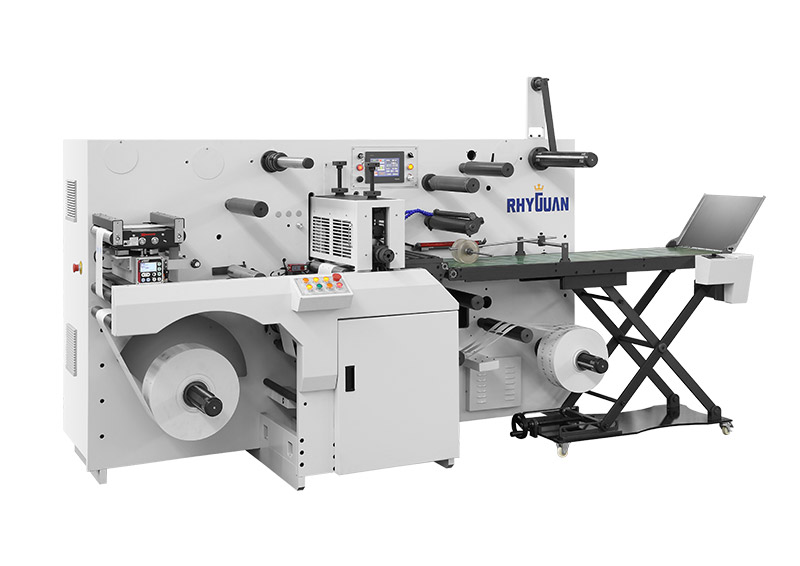In the label printing and finishing industry, achieving precise, consistent cuts while keeping up with production demands is key. Many professionals wonder why Rotary Die Cutting Machines stand out among other cutting solutions for label projects. This article breaks down the core reasons this equipment fits label finishing needs, based on real-world application requirements highlighted by label processing technology providers.
It operates via a rotating die cylinder that feeds material non-stop, whether for standard shipping labels or branded product labels. This design eliminates frequent pauses for reloading or repositioning, directly aligning with the "high efficiency" focus of modern label finishing.
For large-batch label orders—from thousands of retail tags to bulk beverage bottle labels—this steady workflow cuts downtime and ensures production stays on schedule, critical for meeting client deadlines without speed loss.
Labels use diverse materials: thin papers (shipping labels), durable films (cosmetic/beverage labels), pressure-sensitive stocks, and even specialty substrates like metallic foils. A rotary die cutting machine handles these without compromising cut quality.
Its adjustable pressure and tension controls prevent issues like material tearing (for delicate papers) or uneven cuts (for thick films). This means no need for separate machines for different substrates, simplifying workflow and reducing equipment costs.

Many labels require complex shapes—curved edges for cosmetic jars, small cutouts for gift tags, or custom logos for premium products. The rotary die cutting machine’s precision-engineered die cylinder ensures consistent, sharp cuts even for detailed designs.
This accuracy matches the "high quality" standard of professional label finishing, avoiding defects like ragged edges or misaligned cuts that could compromise a product’s shelf appeal and brand reputation.
Label finishing often combines cutting with printing (flexographic or digital), hot stamping, laminating, or inspection. A rotary die cutting machine integrates seamlessly into existing production lines.
For example, it can follow a flexographic printing unit to cut labels right after printing, or pair with inspection systems to validate cut quality mid-process. It even works with hot stamping units for premium effects or laminators for durability, supporting "all-in-one" efficiency.
A Rotary Die Cutting Machine's strength for label finishing lies in its speed, substrate flexibility, precision, and integration ability—all aligned with what label makers need to streamline operations. For those looking to optimize their finishing workflow, choosing equipment that leverages these strengths is essential.
If you’re exploring label finishing solutions that combine rotary die cutting with other key functions (like flex printing or quality inspection), consider dedicated lines. Many providers offer modular setups—such as the TOP-330 series—built specifically for label production. Visit the product page to learn how these integrated solutions support your label finishing goals.
● Another PLUS-330 Machine Installed in Latin America
● Another Two Installations at Customers’ Site
● Rhyguan Plus Month
● Top security level in Rhyguan
● Another Rotary Die-cutting Installation at Cutsomer’s Site
● Perfect Factory Acceptance Testing for Label Inspection Machines
● New Rhyguan Factory Preview
● Rhyguan Industrial 4.0 Live Presentation